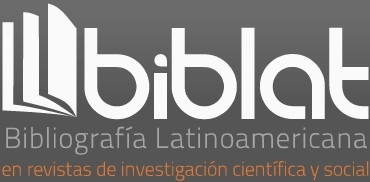Of Mice and Men: The Inheritance of Trauma. Bio-Psycho-Semiotic Reflections
DOI:
https://doi.org/10.35494/topsem.2021.1.45.715Keywords:
Trauma, Inheritance, Post-Memory, IntromissionAbstract
The question of the inheritance of trauma will first be considered from experiments on mice, which show the objective existence of an epigenetic transmission of trauma, over two generations, without causing a modification of the genome. We will then examine the transfer of this hypothesis of transmission to the humans, from the work of the group MemoTV but especially on the basis of the analysis of a case of post-memory manifested by a teenager victim of the legacy of the horrors of the Khmer Rouge genocide in Cambodia. This leads to acting out behaviors (threat with gun, fugue) whose meaning will appear thanks to a psychotherapeutic intervention.
Downloads
References
Anthropos.
Blanquet, B. (2010). Frôler la mort à l’adolescence : un danger nécessaire. Adolescence, 28(1), 123-131.
https://www.cairn.info/revue-adolescence-2010-1-page-123.htm
_______ (2012, Abril-Junio). Maria ou les affres de l’impossible oubli. Perspectives Psy, 51(2), 134-140.
https://www.cairn.info/revue-perspectives-psy-2012-2-page-134.htm? try_download=1
Cookson, C. (2013). Science: Can Emotions be Inherited? Financial Times. https://www.ft.com/content/c94463f6-
66b5-11e3-8675-00144feabdc0#axzz2o30KP0tl.
Coquet, J.-C. (2007). Phusis et Logos. Une phénoménologie du langage. París. Université París 8 ; Saint-Denis ;
PUV.
Cordis. Résultats de la recherche de l’UE (2018). L’ADN peut transmettre aux générations suivantes le souvenir
d’un stress traumatique. https://cordis.europa.eu/article/id/122740-dna-can-carry-memories-of-traumatic-
stress-down-the-generations/fr
Darrault-Harris, I. & Klein, J.-P. (2010). Pour une psychiatrie de l’ellipse. Limoges. PULIM. [Le cas Béatrice, pp. 141-
193].
Dias, B. & Ressler, K. (2014, Septiembre). Parental Olfactory Experience Influences Behavior and Neural Structure
in Subsequent Generationes. Nature Neuroscience, (17), 89-96.
https://www.nature.com/articles/nn.3594#citeas
Duez, B. (2002). L’indécidabilité : un modèle générique du traumatisme. Perspectives Psy, 41(2), 113-118.
Épigénétique. (2020). Wikipédia. https://fr.wikipedia.org/wiki/%C3%89pig%C3%A9n%C3 %A9tique
Estay Stange, V. (2020, Julio-Diciembre). El nacimiento de un concepto [Presentación]. Tópicos del Seminario,
Semiótica y posmemoria, 1(44).
http://www.topicosdelseminario.buap.mx/index.php/topsem/article/view/697/613
Ferenczi, S. (2006). Réflexion sur le traumatisme. En S. Férenczi. Le Traumatisme. París. Payot (Original publicado
en 1934).
Freud, S. (1978). Conferencias de introducción al psicoanálisis. Conferencia XXIV. En Obras completas, 16. (Trad.
de J. I. Echeverry). Buenos Aires. Amorrortu (Original publicado en 1917).
Ignasse, J. (2013). La mémoire du danger transmise à la descendance chez les souris. Biologie Cellulaire.
https://www.sciencesetavenir.fr/fondamental/biologie-cellulaire/la-memoire-du-danger-transmise-a-la-
descendance-chez-les-souris_26649
Steinbeck, J. (1998). Des souris et des hommes. París. Flammarion (Original publicado en 1937: Of Mice and Men.
EE.UU. Covici Friede).
Szyf, M. (2014). Lamarck revisite: epigenetic inheritance of ancestral odor fear conditioning. Nature
Neuroscience, 17(2-4). https://doi.org/10.1038/nn.3603
Filmografía
Llosa, C. (Directora). (2009). La teta asustada [Película]. Perú; España.
Downloads
Published
How to Cite
Issue
Section
License

Tópicos del Seminario is licensed under a Creative Commons Reconocimiento-NoComercial-CompartirIgual 4.0 Internacional License.














